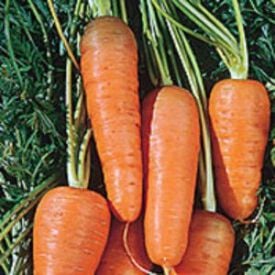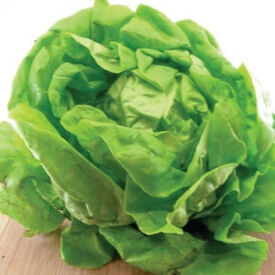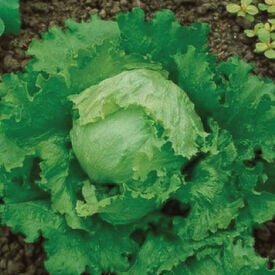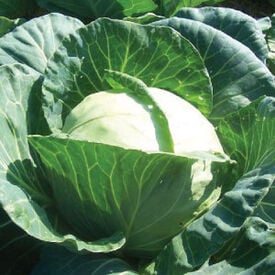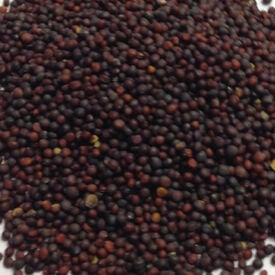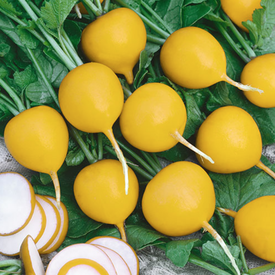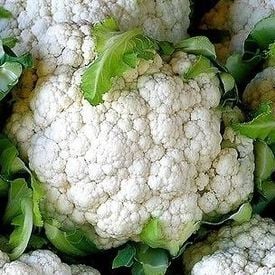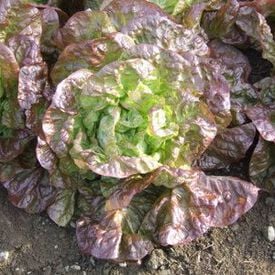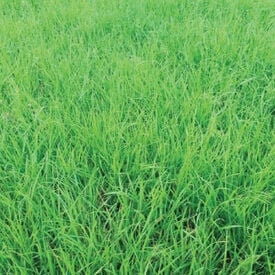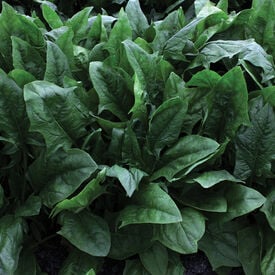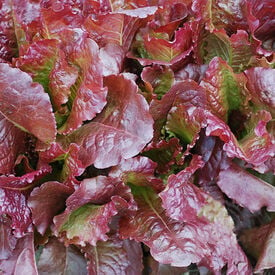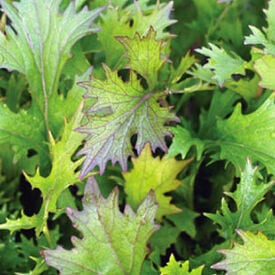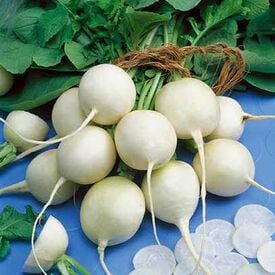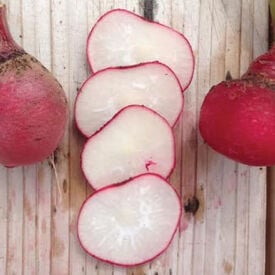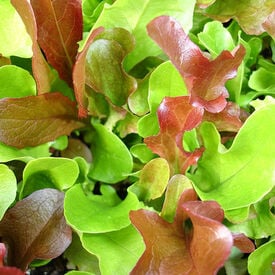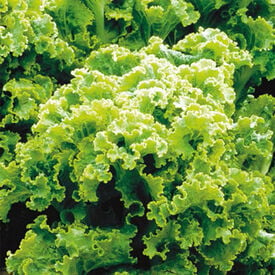Red Cored Chantenay carrots are a vibrant variety known for their distinct color and shape. They feature a deep orange skin that transitions to a striking red core, creating a visually appealing contrast. The carrots have a stout, conical shape, tapering at the end, which makes them easy to harvest and handle. These carrots are celebrated for their sweet, rich flavor and crisp texture, making them ideal for both raw snacking and cooking. They’re versatile in the kitchen, lending themselves well to roasting, steaming, or incorporating into salads. Red Cored Chantenay carrots are also known for their high nutrient content, providing a good source of vitamins and minerals. Their unique coloration is not only attractive but also indicates a high level of antioxidants, contributing to their health benefits.
Bibb is a crisp, clean, and easy to grow butterhead lettuce that has light green leaves with the occasional red spots. The crispy heads often self blanch in the center. This lettuce variety is perfect for farmers markets and for the home gardener. This Bibb does well in the heat, yet still grows quickly in our cool weather. Lt. John B. Bibb served in the War of 1812, represented Logan County in the Kentucky House of Representatives and the state Senate from 1827 to 1834. Lt. Bibb was also an amateur horticulturist and developed the Bibb lettuce we know and love today. However, it wasn't offered commercially until 1935.
Great Lakes 118 lettuce is a classic butterhead variety that has gained popularity among gardeners since its introduction in the mid-20th century. Known for its compact, dense heads and vibrant green, slightly crinkled leaves, this lettuce offers a pleasing texture and rich, buttery flavor. The taste is mildly sweet and crisp, making it ideal for salads and sandwiches. Harvesting typically occurs around 60-75 days after planting, when the heads are firm and fully developed; gardeners can either cut the entire head or pick individual leaves as needed. Great Lakes 118 thrives in cooler temperatures and well-drained soil, making it a favorite choice for spring and fall planting, and it’s particularly valued for its ability to withstand heat and maintain flavor.
An early maturing heirloom cabbage. Early Jersey Wakefield is an early variety of cabbage with pointed heads that resist splitting! A great home garden cabbage with great flavor!
The Ladino Clover is the most popular white clover in the USA as it is two to four times as large as the common white clover! This clover has a high nutritive value and is palatability, making it a popular choice in pasture mixtures. It is not deep rooted, and will not tolerate much drought. Ryegrass and orchardgrass work well with ladino clover in mixtures. Broadcast at 25 lbs. per acre. Seed comes inoculated. Uses: Bees & Beneficial Insects, Chicken Forage, Compaction Control, Deer Attractant, Erosion Control, Forage, Green Manure, Nitrogen Fixation, No Till, Weed Suppression
The Barkant Forage Turnip is an improved, early maturing, diploid turnip variety with a large purple tankard shaped bulb. Turnips have a high leaf to stem ratio and and provide very high concentrations of protein, sugar content and leaf yields. This turnip is ideally suited for grazing and it is common to obtain 4-6 tons of dry matter per acre of this high-energy feed. Uses: Chicken forage, deer attractant, forage
The Golden Helios Radish is named after the Greek god of the sun. This olive-shaped radish is bright yellow with a crispy white flesh and is truly one of the most beautiful radish! Not only is Helios a beauty, it is also tasty with a sweet and mild flavor.
The Self Blanching cauliflower is known for its bright white curds with a delicious flavor! The Self Blanching cauliflower has self-wrapping leaves that help protect the white curds from sun, thus the name Self Blanching Cauliflower. Remember cauliflower likes cool weather plant seed early spring or fall for best crops.
The Red Veined Sorrel is a delicate green with an excellent flavor! This Red Veined Sorrel is a fast growing green that adds a delicious flavor and texture to salads. This green's leaves are best young with a sharp tart flavor that is unique to this plant. The central vein is a dark maroon that webs out throughout the leaf. This variety has very showy leaves that is great for salads, soups, stews and more.
The Marvel of Four Seasons is a French butterhead lettuce with bibb-type rosette leaves. This butterhead, also known as Merveille des Quatre Saisons, is tasty and beautiful. The Marvel of Four Seasons has a robust shape with leaves ranging in bronze, gold, red and green.
The Annual Ryegrass is a very fast growing grass that makes for a great cover crop as its fibrous roots prevent soil erosion and build organic matter! Plant this grass early fall to late fall, or early to mid-spring and can germinate in cool weather. The Annual Ryegrass established protective cover quickly and over seeds well at higher rates. This grass can scavenge as much as 200 pounds of nitrogen per acre. When used as a spring cover crop, this Annual Ryegrass should be killed before reaching seed formation stage. Ryegrass (Lolium sp.) Uses: Erosion Control, Green Manure, Nitrogen Scavenger, No Till, Organic Matter (Biomass), Weed Suppression
Imperial Star is an Asian type spinach that is early maturing. This is a smooth-type spinach with medium sized green leaves. Grows upright on sturdy stalks. Perfect for cooler climates but also low bolt tolerance. Also has a high tolerance for downy mildew.
The Outredegeous Lettuce is a deep, dark purple red romaine that will maintain its dark color even under low-light conditions! This mesmerizing variety is a wonderful baby leaf type and large loose leaf type, making it the perfect lettuce for salad growers. You can start using its leaves after 28 days. Outredegeous seeds are a natural mix of black and white.
The Mizuna Purple Mustard produces bright purple tinged and sharply serrated green leaves. This is a tasty variety that is fast maturing and slow bolting.
The Philadelphia White Box Radish is a tiny, round white variety that is the perfect choice for a container or garden bed! This radish might be small, but it has a big spicy flavor and crispy texture that is wonderful when eaten fresh. The Philadelphia White Box can enjoyed by both home growers or market growers. This variety is a heavy yielder of little, uniform radishes!
The Cherry Belle Radish is the earliest maturing, garden standard radish. This variety is a 1949 All-American Winner and there is no wonder why. This radish retains its fine eating quality all season. The Cherry Belle is a round, smooth, scarlet beauty. This radish is 3/4" inches across with a crisp, white flesh that is ideal for garnishes or use in salads.
The Garden Mesclun Blend is a mixture of light green to emerald, and bronze to deep red lettuces as well as endive and radicchio for a crunchy, zesty flavor that is a perfect addition to any salad!
Green Ice is a crispy loose-leaf lettuce that does well in hot weather! This variety produces an abundance of crunchy loose leaves. Green Ice's leaves are curled with deep green color. This lettuce is ready in just 45 days, it is among the earliest, yet will last well into summer thanks to its superior heat tolerance. Green Ice is one loose-leaf that just won't bolt!
